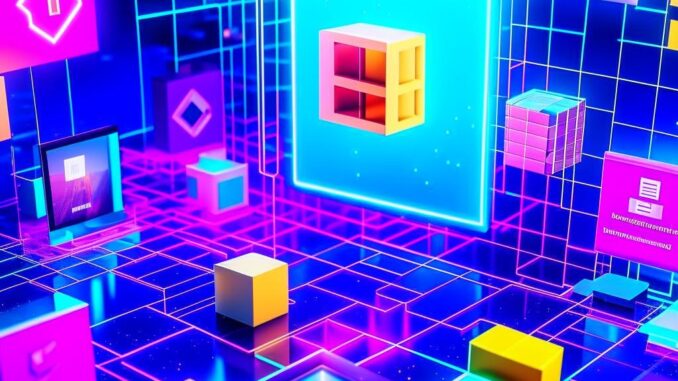
Last night, during the daily candle close, the crypto community witnessed a massive pump in the NFT space: a digital masterpiece by Beeple got listed on Christie’s and skyrocketed to a staggering 69 million USDT. No, it’s not another bull trap; we’re deep in the alt season of Non-Fungible Tokens or NFTs.
From a trading perspective, the bullish trend of NFTs has been more volatile than a DeFi token on its launch day. In the cultural arena, it’s like a rebranding of what we consider ‘moon’ in art, tunes, and even virtual land.
NFTs: Flipping Digital Art for Massive Gains
NFTs, minted on blockchains like Ethereum, are like the limited edition altcoins of the art world. They’re not as interchangeable as your typical ERC-20s. Each has its own unique hash, solidifying its authenticity.
Digital art isn’t new, but turning it into an investment-grade asset? That’s revolutionary. Before NFTs, digital art was like an oversaturated coin – hard to get a solid ROI. But with tokenization, it’s like putting a ‘HODL’ sign on your digital creations.
Beeple’s parabolic rise is just a sneak peek. Digital crypto-artists like Grimes, Pak, and Trevor Jones have been making insane ETH by auctioning their NFTs. Even the legacy auction platform Sotheby’s has opened a portal to the metaverse with its NFT gallery.
Decentralized Tunes: Streaming in the NFT Era
Music’s chart-topping scene is also seeing NFTs as the next resistance level. Artists, fed up with centralization and paltry royalties, found a new strategy: minting their beats.
Kings of Leon dropped their album as an NFT, with each track a rare collectible. Their ‘NFT Yourself’ project was like an IEO, raising massive liquidity. This fresh take promises to be a game-changer, making every artist their own exchange.
H2 – Virtual Lands: The Next Pump?
But it’s not just tunes and pixels. In the metaverse – the decentralized universe – whales and retail traders alike are FOMOing into virtual lands. Platforms like Decentraland, where each plot is an NFT token on Ethereum, are witnessing big buy orders. Some plots have even flipped for millions in ETH.
Skeptics see this as over-leveraging on a digital future, but pioneers see it as the next logical step in our digital evolution.
DYOR: The Hype and FUD Around NFTs
Everyone wants to ride the NFT wave, but as every trader knows: always DYOR (Do Your Own Research). The value of digital assets, be it an altcoin or an NFT, is speculative. And then there’s the gas fees on Ethereum and the carbon footprint debate.
Bubble? Maybe. Just like ICOs had their moment, NFTs might face their bear season. But the tech? It’s here to stay.
Next Candle on the NFT Chart: Future Predictions
Beyond the current price action, NFTs have redefined how we perceive value in the digital realm. Artists and creators are seeing green candles, and the community is bullish. The technology is more than just a trend; it’s a paradigm shift.
Is the NFT market overbought? Time and TA (Technical Analysis) will tell. But the underlying blockchain tech isn’t going anywhere – it’s like saying Bitcoin is just a trend.
As the candles form on this new chart, one thing’s for sure: the crypto space is reimagining the future, one block at a time.
FAQs
An NFT, or Non-Fungible Token, is a unique digital asset secured on a blockchain, the technology that underlies cryptocurrencies like Bitcoin and Ethereum. Each NFT is distinct and can’t be exchanged on a like-for-like basis, which allows for the authentication of digital artworks. This uniqueness is what makes NFTs ideal for monetizing digital art, which had previously been difficult due to the ease of duplication. With NFTs, artists can place a digital signature on their art, converting it into a sellable commodity, and leading to an explosion of interest in the digital art space.
Much like digital artists, musicians have had difficulty with piracy and fair compensation in the digital age. By turning their music into NFTs, musicians can maintain ownership of their work, make money from sales, and even program in royalties so they receive payment every time their music is resold. Grammy-winning artists like Kings of Leon have used NFTs to sell unique tokenized versions of their records and exclusive audiovisual art.
In the metaverse, which is a term for shared virtual reality spaces, NFTs are being used to buy, sell, and trade virtual land. A virtual world like Decentraland allows users to purchase land, build structures, create art, and engage in commerce. Land parcels in such spaces are represented as NFTs on the Ethereum blockchain and, despite being intangible, these plots can command serious money, much like physical real estate.
NFTs have already made a significant impact on the worlds of art, music, and virtual real estate. Despite potential risks, NFTs promise a new frontier of asset exploration for investors and collectors and present a novel way for creators to monetize digital work. Whether the current NFT mania is a bubble or not, the underlying technology and the changes it’s driving are likely to persist.